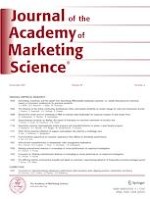08.04.2021 | Original Empirical Research
The influence of the online community, professional critics, and location similarity on review ratings for niche and mainstream brands
Erschienen in: Journal of the Academy of Marketing Science | Ausgabe 6/2021
EinloggenAktivieren Sie unsere intelligente Suche, um passende Fachinhalte oder Patente zu finden.
Wählen Sie Textabschnitte aus um mit Künstlicher Intelligenz passenden Patente zu finden. powered by
Markieren Sie Textabschnitte, um KI-gestützt weitere passende Inhalte zu finden. powered by
